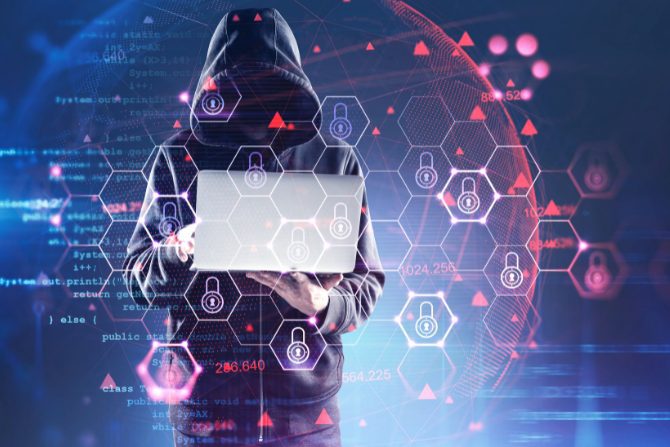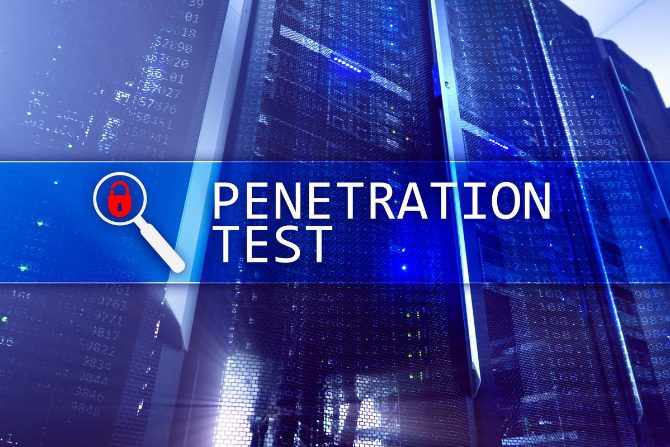
Supply chain security is increasingly complex, demanding constant vigilance and innovative solutions. This post will delve into these challenges’ intricate nature, discussing cyber and physical threats that can disrupt logistics operations.
We’ll also explore the issue of counterfeit products within supply chains, highlighting their impact on businesses and consumers alike. The importance of visibility in maintaining secure supply chains cannot be overstated; hence we’ll examine real-time inventory insights and effective disruption response strategies.
The human factor plays a significant role in supply chain security too. We will address insider threats while stressing the need for employee awareness about external supply chain attacks. Building a positive security culture as a risk mitigation strategy forms another key aspect we will cover.
In addition to this, we’ll shed light on physical penetration tests for enhanced protection against potential breaches. Lastly, leveraging advanced technology tools to stay ahead in today’s competitive marketplace is essential for robust supply chain security – something you won’t miss!
Table of Contents:
- Understanding the Complexities of Supply Chain Security Risks
- The Challenge Posed by Counterfeit Products
- Importance of Supply Chain Visibility
- Human Factors Influencing Supply Chain Security
- Developing a Security Culture as a Risk Mitigation Strategy
- Physical Penetration Tests For Enhanced Protection
- Leveraging Latest Technology Tools to Stay Ahead of the Game
- Conclusion
Understanding the Complexities of Supply Chain Security Risks
The COVID-19 pandemic has highlighted the critical importance of supply chain security in our globalized economy. These risks are complex, ranging from cyber threats to physical dangers like theft and smuggling. Shockingly, a recent survey by ISACA found that 30% of organizations lack an understanding of these risks.

From cyber threats to physical dangers, business owners have to protect their supply chain.
Cybersecurity Threats in Logistics Operations
In today’s digital age, cybersecurity is crucial for any business operation. As more companies rely on technology for logistics, they become prime targets for cybercriminals. These attacks can be devastating, disrupting operations, causing financial loss, and damaging reputation.
Physical Threats: Theft and Smuggling
Real-world dangers like theft and smuggling pose significant challenges to supply chain security. Companies must have robust measures to protect goods during transportation while maintaining efficiency within their supply chains.
To navigate these complexities, businesses need a comprehensive approach combining proactive risk management strategies with advanced technological solutions designed for this purpose. As global uncertainty continues, it’s clear that managing supply chain security risks will remain a top priority.
The Challenge Posed by Counterfeit Products
Counterfeit products are a real pain in the neck for supply chain security. Scammers take advantage of weak points in the supply chain, sneaking in fake goods. This can have potentially devastating implications for businesses and customers alike.

Counterfeit products can have devastating implications for businesses.
Identifying Supply Chain Weak Points
Fraudsters often target the most vulnerable parts of a supply chain, such as areas with less stringent security measures or where oversight is lax. Businesses must conduct regular ISACA audits to identify these potential weak spots and strengthen their defenses accordingly. If you want to learn how to combat a weak supply chain, we recommend looking at our most popular article: 7 successful strategies to improve your supply chain.
Impact Of Counterfeit Goods On Businesses And Consumers
- Negative Brand Perception: When counterfeit goods enter the market under your brand name, it tarnishes your reputation and erodes consumer trust.
- Economic Losses: Fake products lead to lost sales revenue for businesses. According to a Global Brand Counterfeiting Report, global losses due to counterfeits reached $1 trillion in 2023 alone.
- Risk To Consumer Safety: Many counterfeit items are not subject to safety regulations, posing serious risks to consumers who unknowingly purchase them.
To combat this issue in the best way, businesses must understand how fraudsters operate within specific industries and regions. They should also implement robust anti-counterfeit strategies like advanced product authentication technologies based on blockchain
Importance of Supply Chain Visibility
With visibility being a critical factor for success in supply chain management, gaining real-time insight into inventory levels and transportation routes is essential. A lack of real-time insight into inventory levels and transportation routes can make it difficult for companies to detect anomalies or respond effectively when disruptions occur.

Supply Chain visibility is a must in order to react quickly to any threat or danger.
Real-Time Insight into Inventory Levels
Tracking inventory in real-time allows businesses to identify potential issues before they become significant problems. This could be as simple as noticing a sudden drop in stock levels that might indicate theft or spotting an unusual delay in delivery times that could signal logistical challenges. Companies like Sensitech offer solutions designed specifically for this purpose.
Effective Response to Disruptions
When disruptions occur, having immediate access to relevant data can make all the difference. Rerouting shipments around a natural disaster or sourcing alternative suppliers during a strike, reacting swiftly and decisively is crucial. For example, IBM’s supply chain solutions use AI technology to predict potential disruptions and recommend actions based on those predictions.
Full visibility within your supply chain isn’t just about preventing problems; it also offers opportunities for improvement. By analyzing patterns and trends over time, you can identify areas where efficiency could be increased or costs reduced – turning what was once a challenge into an advantage.
Human Factors Influencing Supply Chain Security
Don’t underestimate the impact of human factors when it comes to supply chain security requirements. Insider threats, intentional or accidental due to ignorance or negligence, can cause serious damage if not properly managed.

Humans can also have a negative impact on the supply chain.
Addressing Insider Threats in Organizations
Effective management of insider threats requires robust insider threat programs. These programs should include employee education and training, stringent access controls, and continuous monitoring systems to identify unusual behavior patterns early on.
Creating Awareness Among Employees About External Attacks
It’s equally important for businesses to create awareness among employees about external supply chain attacks. Regular training sessions on cyber safety can equip personnel with the aptitude and ability to identify phishing emails or other types of cyberattacks before they become a major issue.
By understanding the potential risks posed by both internal and external actors, companies can better protect their operations from disruptions caused by human factors. The ILS Company specializes in helping businesses navigate these challenges through our expertise in cross-border operations between Mexico and USA.
Developing a Security Culture as a Risk Mitigation Strategy
A positive security culture among employees is crucial for effective risk mitigation. Companies must ensure that their workforce feels valued and secure to reduce the likelihood of insider threats.

Developing a Security Culture is vital to keep supply chain safe.
Promoting Fair Compensation as Part of Security Culture
Fair compensation is essential for creating a positive work environment. Adequate remuneration encourages employee commitment, reducing the risk of potentially damaging actions. The SHRM guides how to implement equitable pay policies within businesses.
Benefits Packages That Encourage Employee Loyalty
Companies should also consider offering attractive benefits packages to promote employee loyalty. These include health insurance, retirement plans, paid time off, or educational opportunities. Forbes outlines the importance of such benefits packages here.
By fostering this type of culture, businesses mitigate risks associated with internal threats and enhance overall productivity and morale within their teams. This ultimately leads to improved supply chain security and efficiency.
Physical Penetration Tests For Enhanced Protection
If you want to stay ahead of the game in supply chain security, it is essential to take proactive steps. One effective method for doing so is through physical penetration tests. These proactive assessments provide an additional layer of protection against both internal and external hazards.
The Use Of Surveillance Cameras In Delivery Trucks
Surveillance cameras in delivery trucks have become a common sight in recent years. They play a vital role in identifying and preventing potential disruptions while goods are in transit. By monitoring real-time footage, companies can quickly spot any irregularities or suspicious activities, allowing them to respond promptly and minimize potential damage.
Regular Physical Penetration Tests By Companies Like Hy-Vee
Retail giant Hy-Vee regularly conducts physical penetration tests to ensure its strategies remain up-to-date with current trends. This involves simulating attacks on their systems and evaluating how well their defenses hold up under pressure. The insights gained from these exercises allow them to refine their protective measures continually.
Maintaining robust supply chain security requirements isn’t just about investing in advanced technology; it also involves regular testing and evaluation of existing protocols. As threats evolve, so too must our defenses if we’re to keep our operations secure and efficient.

Conducting physical penetration tests is always a good precautory practice.
Leveraging The Latest Technology Tools to Stay Ahead of the Game
In the rapidly evolving landscape of supply chain security, staying ahead of the game is necessary. It requires constant vigilance and a proactive approach, leveraging the latest technologies and tools in the industry. As Madeline Lauver, Editor-in-Chief of Security magazine, notes, professionals must stay informed about emerging techniques and tactics threat actors use to adapt defenses accordingly.

As a business person, don’t forget to invest in technology and training to address modern threats.
Investing in a Robust and Secure Infrastructure is a Necessity for Survival in Today’s Competitive Marketplace
A robust and secure infrastructure is not just an investment; it’s a survival strategy in today’s competitive marketplace. With advanced solutions like IBM Threat Intelligence, businesses can identify potential vulnerabilities before they become actual threats. Platforms that provide instant visibility of network activity can be utilized to detect suspicious activities which may signal a potential attack.
Staying Updated with Emerging Techniques and Tactics Used by Threat Actors
- Cybersecurity training: Regular training sessions can keep employees updated on new cyber threats and how to respond effectively.
- Tech updates: Keeping software systems up-to-date with patches ensures protection against known vulnerabilities exploited by hackers.
- Risk assessments: Conducting regular risk assessments helps identify areas where your business may be vulnerable to attacks.
The world of supply chain security is complex, but with strategic investments in technology and continuous learning, businesses can stay one step ahead of potential threats.
Conclusion
Understanding and managing the complexities of supply chain security risks is paramount in today’s globalized economy.
The COVID-19 pandemic has underscored the importance of supply chain security, with cyber threats and physical dangers such as theft and smuggling posing significant challenges. To effectively navigate these risks, businesses need a comprehensive approach that combines proactive risk management strategies with advanced technological solutions.
Visibility within supply chains is crucial for detecting anomalies and responding swiftly to disruptions while addressing human factors such as insider threats is essential. Cultivating a positive security culture among employees can significantly mitigate risks, while physical penetration tests provide additional protection.
Leveraging the latest technology tools and staying updated with emerging techniques and tactics used by threat actors are necessary for staying ahead of potential risks. Ultimately, investing in a robust and secure infrastructure is an option and a survival strategy in today’s competitive marketplace. By proactively addressing supply chain security risks, businesses can safeguard their operations, reputation, and overall success.
For more information on supply chain security, check out these credible sources: the Department of Homeland Security, the National Institute of Standards and Technology, and the World Trade Organization.
If you are looking to transport merchandise between Mexico and the USA without having to deal with all the supply chain risks this implies, write to us at the ILS Company.


